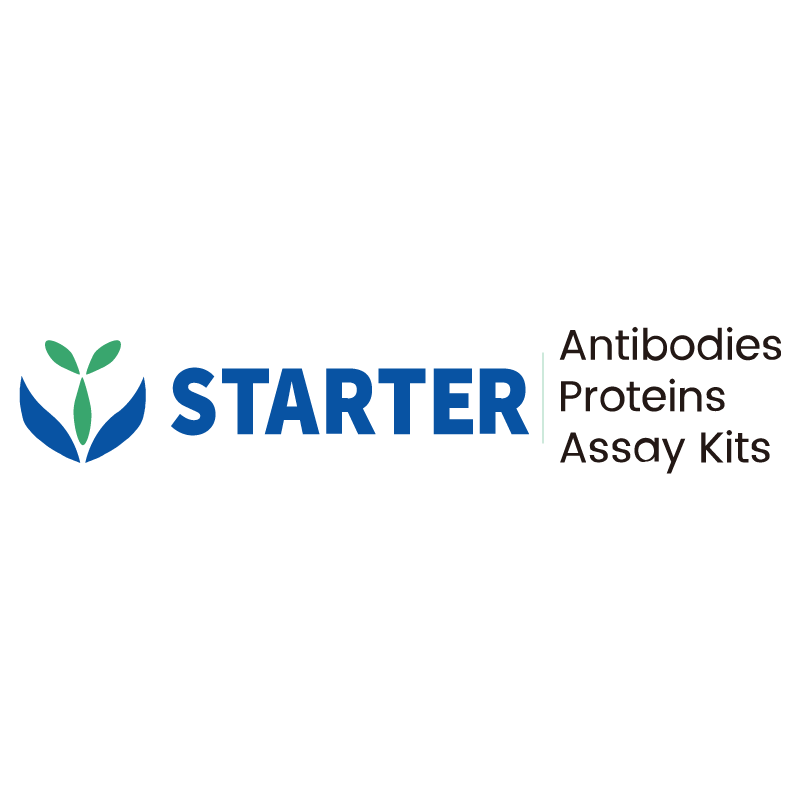WB result of Vitamin D Receptor Recombinant Rabbit mAb
Primary antibody: Vitamin D Receptor Recombinant Rabbit mAb at 1/1000 dilution
Lane 1: HeLa whole cell lysate 20 µg
Lane 2: T-47D whole cell lysate 20 µg
Lane 3: HL-60 whole cell lysate 20 µg
Lane 4: DU 145 whole cell lysate 20 µg
Lane 5: THP-1 whole cell lysate 20 µg
Lane 6: HT-29 whole cell lysate 20 µg
Lane 7: LOVO whole cell lysate 20 µg
Secondary antibody: Goat Anti-Rabbit IgG, (H+L), HRP conjugated at 1/10000 dilution
Predicted MW: 48 kDa
Observed MW: 48 kDa
Product Details
Product Details
Product Specification
| Host | Rabbit |
| Antigen | Vitamin D Receptor |
| Synonyms | Vitamin D3 receptor; VDR; 1,25-dihydroxyvitamin D3 receptor; Nuclear receptor subfamily 1 group I member 1; NR1I1 |
| Immunogen | Synthetic Peptide |
| Location | Cytoplasm, Nucleus |
| Accession | P11473 |
| Clone Number | S-1719-7 |
| Antibody Type | Recombinant mAb |
| Isotype | IgG |
| Application | WB, ICC |
| Reactivity | Hu, Ms, Rt |
| Positive Sample | HeLa, T-47D, HL-60, DU 145, THP-1, HT-29, LOVO, NIH/3T3, mouse kidney, rat kidney |
| Predicted Reactivity | Bv, Pg, CtTa, Ck |
| Purification | Protein A |
| Concentration | 0.5 mg/ml |
| Conjugation | Unconjugated |
| Physical Appearance | Liquid |
| Storage Buffer | PBS, 40% Glycerol, 0.05% BSA, 0.03% Proclin 300 |
| Stability & Storage | 12 months from date of receipt / reconstitution, -20 °C as supplied |
Dilution
| application | dilution | species |
| WB | 1:1000 | Hu, Ms, Rt |
| ICC | 1:500 | Hu |
Background
VDR is a nuclear transcription factor encoded by the VDR gene, which is a member of the steroid-thyroid-vitamin D receptor gene superfamily of nuclear transcription factors. It has multiple domains, including an amino-terminal segment (domains A and B), a DNA binding domain (C) with two zinc fingers, a hinge region (D), and a carboxyl terminal domain (E) with ligand and retinoid X receptor α (RXRα) binding sites. VDR acts as a ligand-activated transcription factor that binds to the vitamin D response element (VDRE) in the promoter regions of target genes, regulating their transcription. VDR is widely expressed in various human tissues, including the intestine, kidney, bone, skin, and immune cells. It has been reported to have more than 1000 target genes and is found in most human tissues. VDR is involved in calcium and phosphorus homeostasis, bone health, immune regulation, and has been implicated in the pathology of at least 17 types of cancer, autoimmune diseases, diabetes, osteoarthritis, and periodontal disease. It also plays a role in the central nervous system, with VDR gene polymorphisms and vitamin D deficiency being associated with an increased susceptibility to Alzheimer's disease and Parkinson's disease.
Picture
Picture
Western Blot
WB result of Vitamin D Receptor Recombinant Rabbit mAb
Primary antibody: Vitamin D Receptor Recombinant Rabbit mAb at 1/1000 dilution
Lane 1: NIH/3T3 whole cell lysate 20 µg
Lane 2: mouse kidney lysate 20 µg
Secondary antibody: Goat Anti-Rabbit IgG, (H+L), HRP conjugated at 1/10000 dilution
Predicted MW: 48 kDa
Observed MW: 48 kDa
WB result of Vitamin D Receptor Recombinant Rabbit mAb
Primary antibody: Vitamin D Receptor Recombinant Rabbit mAb at 1/1000 dilution
Lane 1: rat kidney lysate 20 µg
Secondary antibody: Goat Anti-Rabbit IgG, (H+L), HRP conjugated at 1/10000 dilution
Predicted MW: 48 kDa
Observed MW: 48 kDa
Immunohistochemistry
Negative control: IHC shows negative staining in paraffin-embedded human ×××. Anti-××× antibody was used at 1/××× dilution, followed by a HRP Polymer for Mouse & Rabbit IgG (ready to use). Counterstained with hematoxylin. Heat mediated antigen retrieval with Tris/EDTA buffer pH9.0 was performed before commencing with IHC staining protocol.
Immunocytochemistry
ICC shows positive staining in A431 cells. Anti-Vitamin D Receptor antibody was used at 1/500 dilution (Green) and incubated overnight at 4°C. Goat polyclonal Antibody to Rabbit IgG - H&L (Alexa Fluor® 488) was used as secondary antibody at 1/1000 dilution. The cells were fixed with 4% PFA and permeabilized with 0.1% PBS-Triton X-100. Nuclei were counterstained with DAPI (Blue). Counterstain with tubulin (Red).


